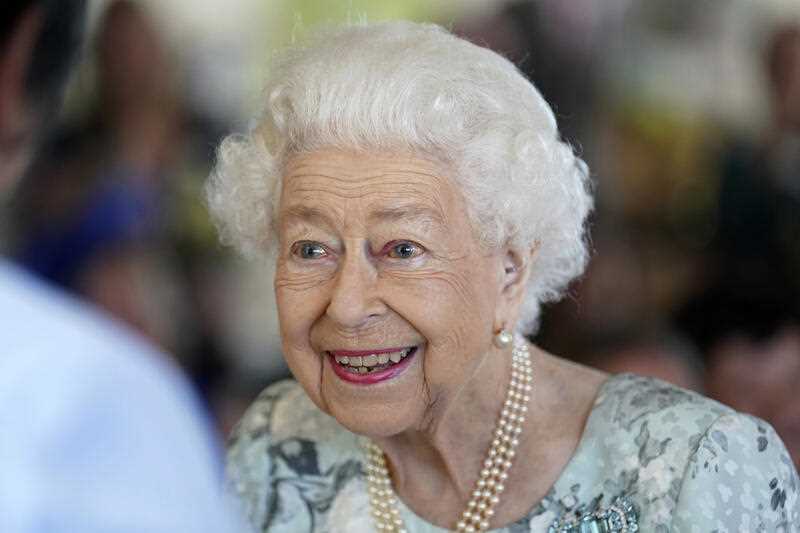Queen Elizabeth, Britain’s longest-reigning monarch, the country’s figurehead and a towering presence on the world stage for seven decades, has died peacefully at her home in Scotland aged 96.
“The death of my beloved Mother, Her Majesty The Queen, is a moment of the greatest sadness for me and all members of my family,” the new king, her eldest son Charles, said.
“We mourn profoundly the passing of a cherished Sovereign and a much-loved mother. I know her loss will be deeply felt throughout the country, the Realms and the Commonwealth, and by countless people around the world,” the 73-year-old said in a statement.
Buckingham Palace said Charles and his wife Camilla, the Queen Consort , would remain at Balmoral Castle, where the Queen died, before returning to London on Friday.
On Elizabeth’s death, Charles automatically becomes king of the United Kingdom and the head of state of 14 other realms including Australia, Canada and New Zealand.
His office confirmed he would be known as Charles III.
News that the Queen’s health was deteriorating emerged shortly after midday on Thursday when her doctors said she was under medical supervision, prompting her family to rush to be by her side.
The Queen had been suffering from what Buckingham Palace had called “episodic mobility problems” since the end of last year, forcing her to withdraw from nearly all her public engagements.
Her last public duty came only on Tuesday, when she appointed Liz Truss prime minister – the 15th of her reign.
“The death of Her Majesty the Queen is a huge shock to the nation and to the world,” Truss said outside her Downing Street office where the flag, like those at royal palaces and government buildings across London, were lowered to half-mast.
Queen Elizabeth II, who was also the world’s oldest and longest-serving head of state, came to the throne following the death of her father King George VI on February 6, 1952, when she was just 25.
She was crowned in June the following year.
The first televised coronation was a foretaste of a new world in which the lives of the royals were to become increasingly scrutinised by the media.
“I have in sincerity pledged myself to your service, as so many of you are pledged to mine. Throughout all my life and with all my heart I shall strive to be worthy of your trust,” she said in a speech to her subjects on her coronation day.
Elizabeth became monarch at a time when Britain still retained much of its old empire.
It was emerging from the ravages of World War II, with food rationing still in force and class and privilege still dominant in society.
Winston Churchill was Britain’s prime minister at the time, Josef Stalin led the Soviet Union and the Korean War was raging.
In the decades that followed, Elizabeth witnessed massive political change and social upheaval at home and abroad.
Her own family’s tribulations, most notably the divorce of Charles and his late first wife Diana, were played out in full public glare.
While remaining an enduring symbol of stability and continuity for Britons at a time of relative national economic decline, Elizabeth also tried to adapt the ancient institution of monarchy to the demands of the modern era.
“She has managed to modernise and evolve the monarchy like no other,” her grandson Prince William, who is now heir to the throne, said in a 2012 documentary.
Elizabeth was the 40th monarch in a royal line that followed Norman King William the Conqueror, who claimed the English throne in 1066 after defeating Anglo-Saxon ruler Harold II at the Battle of Hastings.
Her long reign meant she repeatedly broke records for British rulers.
When she surpassed the more than 63 years her great-great-grandmother Queen Victoria spent on the throne, she said it was not a landmark to which she had ever aspired.
“Inevitably a long life can pass by many milestones – my own is no exception,” she said.
Her marriage to Prince Philip lasted 73 years, until his death in April 2021, and they had four children, Charles, Anne, Andrew and Edward.
She never gave a media interview and critics said she came across as distant and aloof.
But for the vast majority of her subjects, for whom she was the only monarch they have known, she was a figure who commanded respect and admiration.
Her death marks the end of an era.
“In her public duties she was selfless and wise, with a wonderful generosity of spirit. That is how she lived – and how she led,” former UK prime minister John Major said.
“For millions of people – across the Commonwealth and the wider world – she embodied the heart and soul of our nation, and was admired and respected around the globe.”
At her death the queen was head of state of not only the United Kingdom but also of Australia, the Bahamas, Belize, Canada, Grenada, Jamaica, New Zealand, Papua New Guinea, Saint Lucia, Saint Kitts and Nevis, Tuvalu, the Solomon Islands, Saint Vincent and the Grenadines, and Antigua and Barbuda.
Get the latest news, sport, entertainment, lifestyle, competitions and more delivered straight to your inbox with the Canberra Daily Daily Newsletter. Sign up here.



